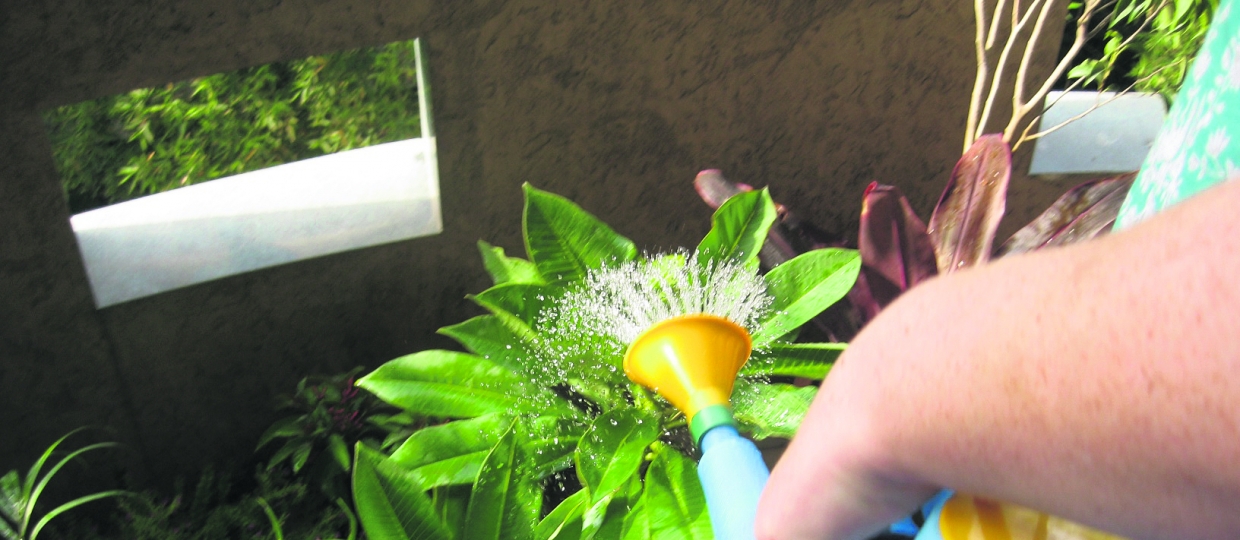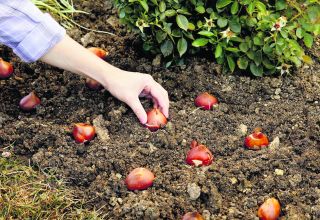With the longest day approaching, warm sunny days and long balmy evenings should be making your garden a joyous place to be. All this heat and light means that it is full to brimming, with plants displaying fresh foliage and perfect new flowers. Although the garden is in full swing there is still plenty to be getting on with, as well as potential problems to look out for.
Water, water everywhere
Keep on top of watering from June onwards in dry periods. This is essential at this time of year, and extra-especially so for containers and anything you have recently planted.
Well over 90 per-cent of plants that fail in the year after they were planted do so for lack of water. To be of any use, water has to get down to the roots of a plant. So wetting the surface is not enough when the roots can easily be12 inches down. If in doubt, drench the plant to begin with – water well, go away, come back, water well and repeat. Once the ground is properly watered it is actually easy to keep it that way.
Don’t water at all until it needs it. Scratch into the soil with a finger to a depth of about two inches if it is dry you need to water. Otherwise leave well alone. A lot of water at wide intervals is much better for plants in the ground than little and often. Containers dry out much faster so it is important to water them more often.
Remember that the larger the plant, the longer it will take to establish and so the longer you will need to water it.
Crunch time for salads
Keep sowing short rows of quick-growing salad crops such as spring onions, radishes and lettuces (the latter in shade if you can, or they will bolt – sow in the evening if the weather is hot), for a constant supply of crunchy salads.
Keep an eye on the sweet peas
Tie in sweet peas if you planted early, and if you planted late, pinch out at six inches to encourage branching. In dry weather water well or you’ll see the buds aborting and energies wasted.
Tasks in the greenhouse
Sow herbs in pots to grow on your kitchen windowsill, such as coriander, parsley and basil.
Plant out tender vegetables raised indoors, including beans, tomatoes, pumpkins, courgettes and sweetcorn.
Pinch out the sideshoots of cordon tomatoes regularly.
Introduce biological controls to the greenhouse if you have pests such as whitefly or red spider mite.
Take leaf cuttings from houseplants, including African violets, begonias and Cape primroses.
Water greenhouse tomatoes regularly to prevent split fruits and blossom end rot.
Get tulips ready for action next spring

The spring bulbs that occupied your pots so spectacularly a few weeks ago should be dried off in the sun so that the remains of their foliage can soak up the goodness. You can do this in trays that are put out in a hot spot for a week or so. If it’s wet, they go under cloches or clear plastic. As soon as the foliage withers, they can be cleaned and stored dry in the shed. Feed them weekly with tomato feed after they have finished flowering to build up the bulbs.
Thin fruit to a bumper harvest
The natural June drop will see many small fruitlets fall from your trees, but for the best-size fruits it’s worth checking to see if you need to thin more of them to remove excess fruit.
Thin apples to one fruit per cluster: for dessert apple varieties, thin to 10-15cm between clusters; and for cooking varieties, thin to 15-23cm between clusters.
- Pears should be reduced to two fruits per cluster, with clusters 10-15cm apart.
- Peaches should be thinned to 20-25cm apart.
- Nectarines should be thinned to 15cm apart.
Make good compost
Now the garden is full of growth and the lawn is being cut regularly, there will be plenty of material available for composting.
Make sure that you fill your compost bin with an equal volume of nitrogen-rich material (grass clippings, manure, shrub prunings) and carbon-rich material (flower stalks, shredded paper, woody clippings).
Keep your compost bin moist. The contents should hold together, but not drip water, when you squeeze a handful.
If you want compost fast, the secret of success is to turn the contents of your bin once a week.

Tie up the tomatoes
Young tomatoes should be planted outside if they haven’t been already. Pinch out side shoots and tie in loosely to canes. You will not need to start feeding until the first truss is set. In a greenhouse this should already have happened, so feed with a product high in potash, such as Tomorite, to encourage fruit formation and ripening.
 Tending your strawberries
Tending your strawberries
To help ripen strawberries and keep the fruit from getting splashed by mud, it is traditional to bed them down with straw. A bundle of fleece, placed under the fruit, will also work if straw is hard to come by. Wet weather, so often associated with Wimbledon and the strawberry season, is bad news for the fruit, so if you have a cloche or two to hand, cover them to prevent botrytis getting a hold. Alpine strawberries are far less interested in sunbathing and will keep you in fruit the summer long even in dappled shade.
Plus
- June is traditionally the month when roses are at their peak.
- Removing the flowers as they fade will keep displays looking good and encourage more blooms. Snap off just below the head. This is thought to make more blooms appear more quickly than the classic method of cutting just above the leaf.
- Thin out hardy annuals. Be brutal – most of them (cornflowers, nigellas and English marigolds included) benefit from spacing 30cm apart. More room means more root, leaves and photosynthesis, better flowers and a longer life.
- Prune back sedums – this will stop the centre becoming bare as the stems flop outwards. Cut the stems back by about a third to stop this outward sagging.
- Take cuttings from hydrangeas, fuchsias, pelargoniums, osteospermums, marguerites, coleus and verbena. Water well with a deluge rather than a sprinkle as this will encourage to plant roots to go down rather than surface rooting.
- Apply grease bands to young fruit trees or paint grease strips on to larger trees to protect crops from damage caused by earwigs and ants. Although it does not say so on the pot, fruit tree grease is brilliant at keeping earwigs off almost anything.











